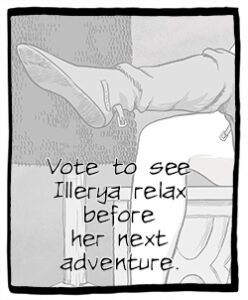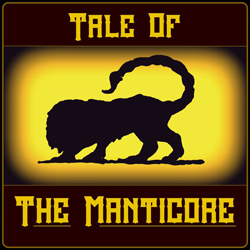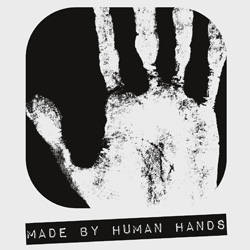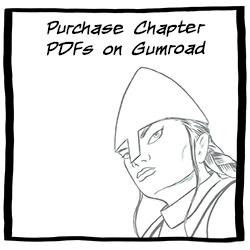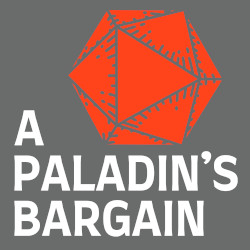How to Fight: Part 1
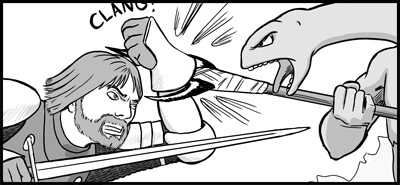
Combat! When the adventure leads your characters to a place where disagreements become serious. The Hobgoblin wants to eat you, the cultists want you for their sacrifice, the dragon wants you out of his lair, and a civil discussion is not going to get the job done… These are rules for when it’s time to fight. These rules are how I organize fights, scale up those fights, utilize miniatures for the serious fights and then resolve fights ‘off camera’ where, as a Dungeon Master, I need a quick resolution at any scale. These rules are obviously going to based in the B/X Dungeon and Dragons tradition. I use a version of BECMI’s weapon mastery. I have skirmish miniature movement rules as an optional set. I also have firearms rules included in the ranged weapons section. There are some things that cannot be separated from the rest of my house rules, but I believe, over all, that this is system that can take the place of any combat system in the OSR menagerie of B/X and AD&D clones. I have the rules organized in the simplest version and each section can be expanded with the subsequent optional rules section into a wargame to reasonable complexity but still able to involve your characters directly.
The Basics! This is the flow of the combat round. This should be very familiar to anyone who has played Dungeons and Dragons. I am including it because it is the framework that the rest of the system builds upon.
Combat Sequence Flow
- Initiative: Each side rolls a 1d6 to determine who attacks first
- the highest roll has the first turn, followed sequentially in descending order.
- tie rolls means actions happen simultaneously
- When it’s your Round
- Roll for Saving Throws against ongoing effects
- Magic, physical, and time-sensitive effects are all included
- Roll for Morale
- only for NPCs and Monsters, PCs can make their own decisions.
- Below is a list of appropriate conditions on when to check for morale.
- Choose your action that could be accomplished in approximately 10 seconds.
- Move
- At this most simple level, it’s to move into or out of melee range.
- Ranged Attacks
- Choose the target
- Make the attack roll
- Roll damage for any successful attacks
- Target makes any appropriate saving throws, if necessary.
- Magical Effects
- Choose target or targets
- Targets makes any appropriate saving throws.
- DM applies any immediate effects
- Hand-to-hand Combat
- Choose the target, limited by who is in melee range
- make the attack roll
- Roll for damage to be applied to target
- Do the Other Thing!
- Cry for help, sing a verse, jump from balcony, press the button, etc.
- Ability and Skills rolls may apply.
- Move
- Roll for Saving Throws against ongoing effects
- Resolution
- The Dungeon Master determines any special effects
- Make saving throws for hit point loss vs. death
- Calculate and apply ongoing effects
- The round is over, if the fight isn’t over, it’s time to roll Initiative again!
Initiative Details
Initiative at this stage is defined as Group Initiative. There is one roll for the PCs and one roll for the opponents. If there is more than one opponent, each group rolls independently. The highest roll on a d6 goes first. The next lowest goes next and so on. All effects from your round will be applied before the next group gets to go. The Dungeon Master should allow for variety in player order based on the tactical situation. If the d6 is a tie, then all the effects from both groups will get applied at the same time.
Morale Details
The Dungeon Master will roll 2d6 against the opponent’s Morale score. This is found in the monster description. If this 2d6 roll is greater than the morale score number, the opponent will attempt to disengage from combat, either parley or flee based on the Dungeon Master’s discretion. A roll less than or equal to the morale score means the opponent will press on the attack. At this stage, you roll Morale for the entire group at once. The Dungeon Master can apply adjustments no greater than -2 to +2 to the roll. It is not necessary to roll for Morale each round, below are the conditions that Morale may be rolled for:
- When the Party Runs Away: A morale check is used to see if the opponent pursues the party.
- To Continue the Chase: every 5 combat rounds of the party fleeing, check again to see if the opponent pursues.
- When Fighting: When a solo opponent is reduced to less than a quarter hit points, death is near!
- When Fighting: When the first opponent is killed.
- When Fighting: When less than half of the opponents are still able to fight.
- When Fighting: If not a solo opponent, when you are the last man standing
- In response to an effect, spell, skill or otherwise.
Movement
Combat movement can get really complicated when you account for miniatures and troop movements. At this most basic stage, movement is defined as if you are in range for hand-to-hand combat or not. If you are not in hand-to-hand combat range you can still attack with ranged weapons or magic. Unless there is a specific attempt to dog pile an opponent, there is a default 4 to 1 limitation on how many people can effectively gang up on a single opponent. The argument is that you need room to swing weapons and still hit your intended target. This also effects people out of hand-to-hand combat range. An attempt to use ranged weapons on an opponent with 4 people attacking will result in one of the attackers acting as cover for the opponent. The 4 to 1 rule can be adjusted at the Dungeon Master’s discretion to accommodate differences in size between attacker an opponent. For example, many kobolds can simultaneously attack an ogre because of the vast size differences between the two races.
Rolling to Attack
Both ranged and hand to hand are resolved with to-hit rolls. I use THAC0 as my method to determine what is needed to hit. AC starts at 9 and descends as the opponent gains more and more protection. AC greater than 9 is possible and there is no hard limitation on how low AC can go. The attacker subtracts his opponent’s AC from his THAC0 to get the number he must beat with a d20 roll in order to hit. Bonuses to hit are applied to the roll. The AC method is second nature to me now and I go with it even though I recognize ascending AC makes more logical sense. A roll of a 1 is always a miss and a roll of a natural 20 is always a hit. At this level of complexity, a 1 is just a miss, and a 20 is just a hit. Complications and chaos for critical hits and misses are applied as optional rules.
Ranged Attacks
Range is not calculated at this level of complexity. If the shooter is with the party and is out of hand to hand range, the attacker is considered within range of the weapon. The only level of complexity added is the opponent might be in cover. No differentiation is made at this stage between hard and soft cover. All cover applies a -4 penalty to hit. If the attackers roll would have hit the opponent if not for the penalty applied, then the weapon has hit the cover. Damage from the weapon attack is applied to the cover, even if it is a fellow player character.
Saving Throw vs. Death and Negative Hit Points
Combat is brutal at low levels. Often a PC can be knocked to zero hit points with a single hit. When a PC is down to negative hit points from combat, at the end of the turn the player has to make a saving throw vs. death. If the PC fails the Saving Throw vs. death, the PC is dead. If successful, the PC is semi-conscious, incapacitated, and loosing another hit point per round. The only actions the character can take is a slow crawl, ragged speech, and grabbing or letting go of gear that is equipped, or something else dramatic and similar. It’s time to tell your last secret, press the launch button, or let them know that you did it for Johnny. The PC will loose an additional hit point per round until they reach negative hit points equal to their constitution score at which point the PC will truly die, no further save possible. The negative loss of hit points can be stopped in a couple of ways. One, any curing magic will halt the loss, and second another character using the healing skill successfully will have applied enough first aid to also stabilize the hit point loss. A character who is in a stable, but negative hit point situation has fallen into a coma and will be there until the PC’s hit points are positive again, either through natural healing or the further application of healing magic. Often, the PC will have scars, PTSD, or other lingering effects from these sorts of traumas, but at this complexity level, they are cosmetic and up to the Dungeon Master.
Got this? Now go to part two where I add the next layer.
